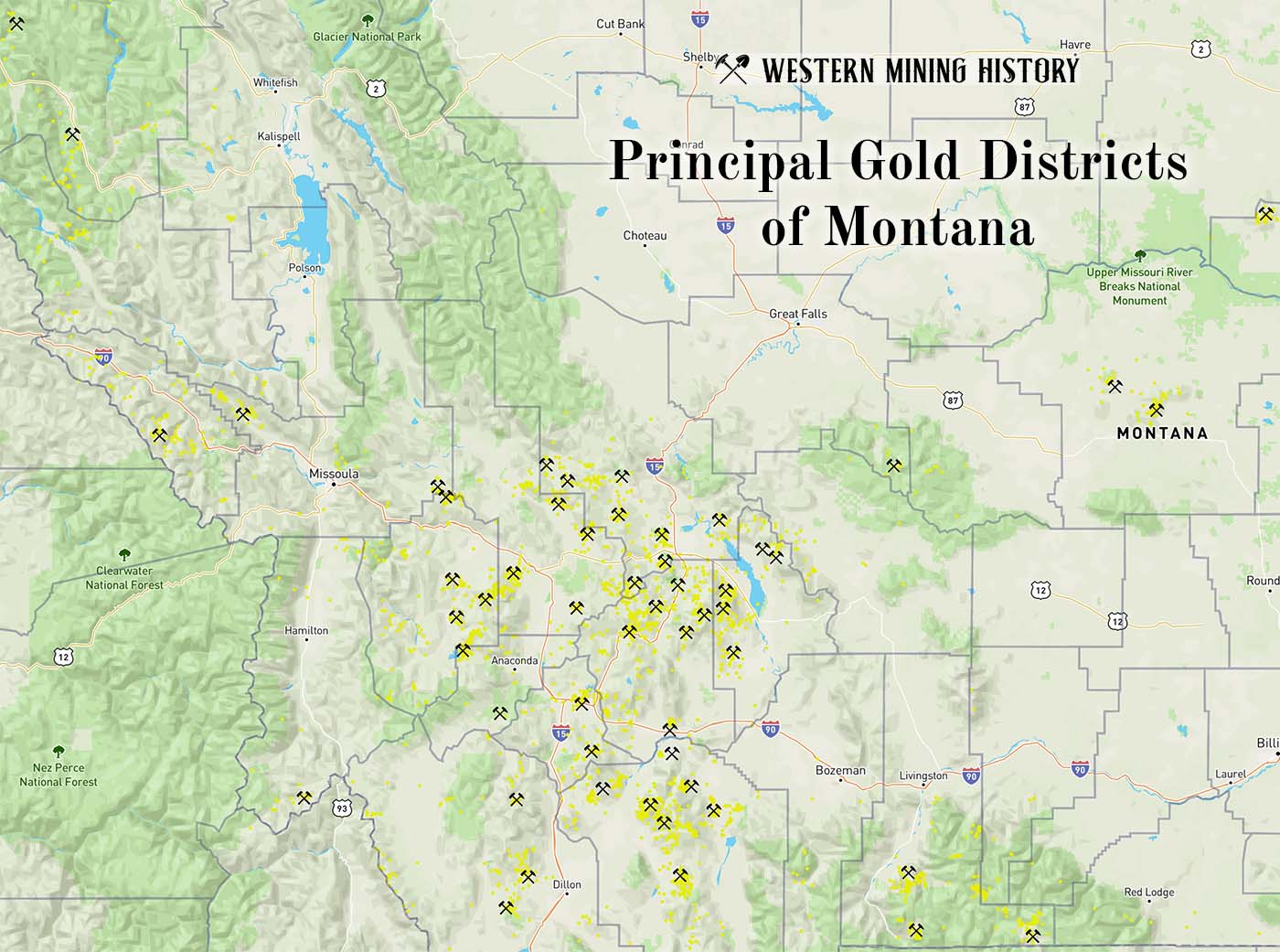The Little Hawk Mine is a tungsten mine located in Beaverhead county, Montana at an elevation of 7,940 feet.
About the MRDS Data:
All mine locations were obtained from the USGS Mineral Resources Data System. The locations and other information in this database have not been verified for accuracy. It should be assumed that all mines are on private property.
Mine Info
Elevation: 7,940 Feet (2,420 Meters)
Commodity: Tungsten
Lat, Long: 45.31944, -113.05333
Map: View on Google Maps
Little Hawk Mine MRDS details
Site Name
Primary: Little Hawk Mine
Secondary: Bartholdi ?
Commodity
Primary: Tungsten
Tertiary: Copper
Location
State: Montana
County: Beaverhead
District: Baldy Mountain District
Land Status
Land ownership: Private
Note: the land ownership field only identifies whether the area the mine is in is generally on public lands like Forest Service or BLM land, or if it is in an area that is generally private property. It does not definitively identify property status, nor does it indicate claim status or whether an area is open to prospecting. Always respect private property.
Holdings
Not available
Workings
Type: Unknown
Ownership
Owner Name: Little Hawk Mining Co.
Home Office: St. Louis, Mo.
Years: 1960 -
Production
Not available
Deposit
Record Type: Site
Operation Category: Producer
Deposit Type: Contact Metasomatic
Operation Type: Unknown
Year First Production: 1955
Years of Production:
Organization:
Significant: N
Deposit Size: S
Physiography
General Physiographic Area: Rocky Mountain System
Physiographic Province: Northern Rocky Mountains
Physiographic Detail: Pioneer Mountains
Mineral Deposit Model
Not available
Orebody
Not available
Structure
Type: L
Description: N60e, 60 Se Trending Faults, Pioneer Batholith
Alterations
Alteration Type: L
Alteration Text: Skarn
Rocks
Name: Diorite
Role: Associated
Age Type: Associated Rock
Age Young: Late Cretaceous
Name: Diorite
Role: Associated
Age Type: Host Rock Unit
Age Young: Mississippian
Name: Diorite
Role: Associated
Age Type: Associated Rock Unit
Age Young: Late Cretaceous
Name: Diorite
Role: Associated
Age Type: Host Rock
Age Young: Mississippian
Analytical Data
Analytical Data: SAMPLES ASSAYED FROM NIL TO 0.188% WO3.
Materials
Ore: Scheelite
Ore: Powellite
Ore: Chalcopyrite
Gangue: Magnetite
Comments
Comment (Development): COPPER DISCOVERED IN EARLY 1890'S. SOME EXPLORATION WORK COMPLETED. TUNGSTEN DISCOVERED 1951. 150-TON MILL AND STORAGE DAMS BUILT 1955. 1 PATENTED, 6 UNPATENTED CLAIMS
Comment (Deposit): MAIN TACTITE BODY IS IN NW END OF PIT. SMALLER BODIES (100X20 FT) EXTEND TO THE SE END OF PIT ALONG A NW-SE TREND. MAIN TACTITE IS TERMINATED BY NE FAULT.
Comment (Workings): OPEN PIT, 30-FT INCLINED SHAFT THAT BEARS WEST AT THE SE END OF PIT.
Comment (Production): A SMALL AMOUNT OF CONCENTRATES WAS PRODUCED DURING MILL TESTS.
Comment (Location): NE 1/4, NE 1/4, SECTION 15.
References
Reference (Deposit): USBM RI 5552, P. 32-34
Reference (Deposit): 1960 RECON U.S. BUREAU OF MINES, R.I., 555
Reference (Production): U.S.B.M., R.I. 5552
Principal Gold Districts of Montana

In Montana, 54 mining districts have each have produced more than 10,000 ounces of gold. The largest producers are Butte, Helena, Marysville, and Virginia City, each having produced more than one million ounces. Twenty seven other districts are each credited with between 100,000 and one million ounces of gold production. Read more: Principal Gold Districts of Montana.